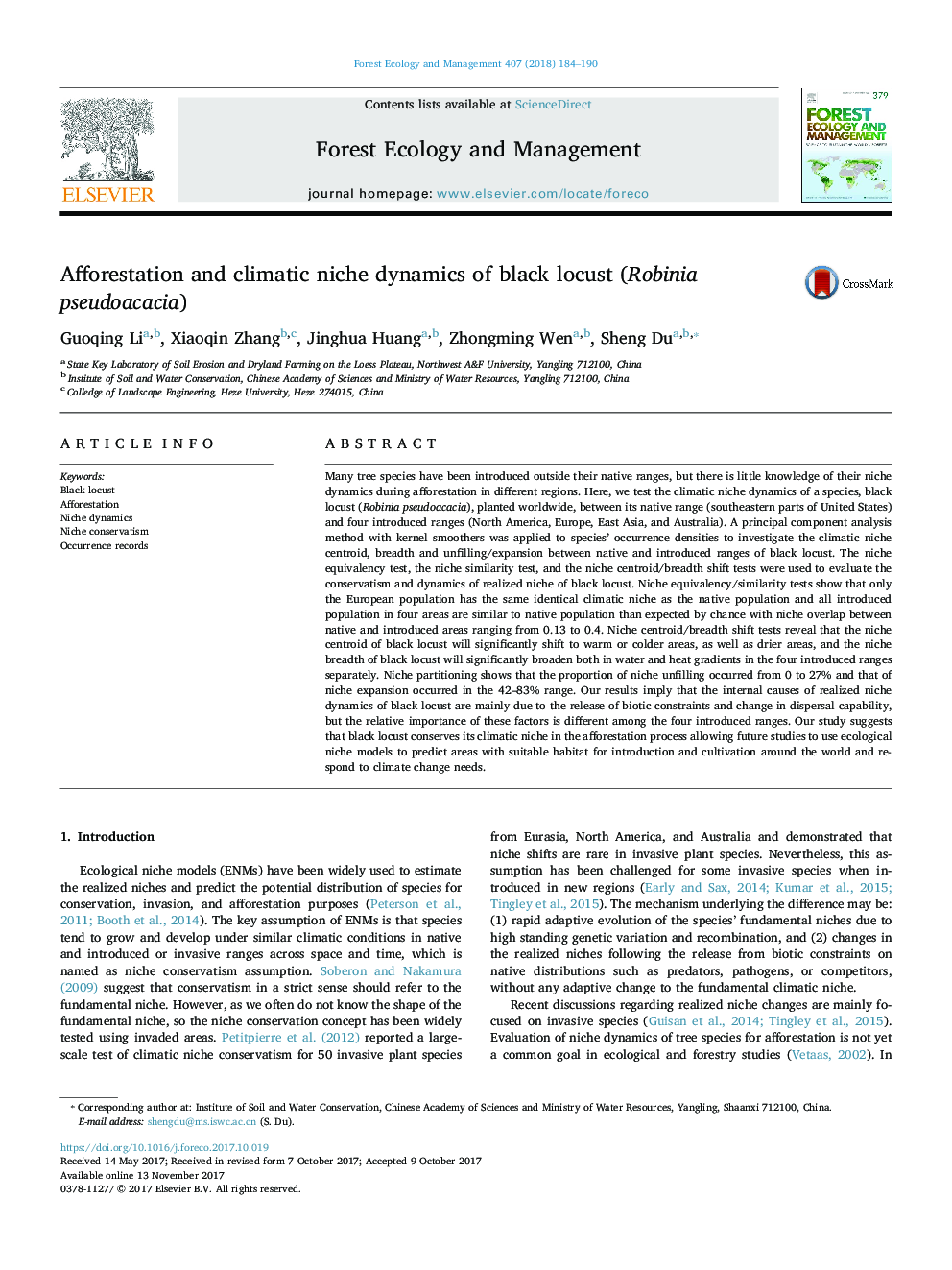| Article ID | Journal | Published Year | Pages | File Type |
|---|---|---|---|---|
| 6541991 | Forest Ecology and Management | 2018 | 7 Pages |
Abstract
Many tree species have been introduced outside their native ranges, but there is little knowledge of their niche dynamics during afforestation in different regions. Here, we test the climatic niche dynamics of a species, black locust (Robinia pseudoacacia), planted worldwide, between its native range (southeastern parts of United States) and four introduced ranges (North America, Europe, East Asia, and Australia). A principal component analysis method with kernel smoothers was applied to species' occurrence densities to investigate the climatic niche centroid, breadth and unfilling/expansion between native and introduced ranges of black locust. The niche equivalency test, the niche similarity test, and the niche centroid/breadth shift tests were used to evaluate the conservatism and dynamics of realized niche of black locust. Niche equivalency/similarity tests show that only the European population has the same identical climatic niche as the native population and all introduced population in four areas are similar to native population than expected by chance with niche overlap between native and introduced areas ranging from 0.13 to 0.4. Niche centroid/breadth shift tests reveal that the niche centroid of black locust will significantly shift to warm or colder areas, as well as drier areas, and the niche breadth of black locust will significantly broaden both in water and heat gradients in the four introduced ranges separately. Niche partitioning shows that the proportion of niche unfilling occurred from 0 to 27% and that of niche expansion occurred in the 42-83% range. Our results imply that the internal causes of realized niche dynamics of black locust are mainly due to the release of biotic constraints and change in dispersal capability, but the relative importance of these factors is different among the four introduced ranges. Our study suggests that black locust conserves its climatic niche in the afforestation process allowing future studies to use ecological niche models to predict areas with suitable habitat for introduction and cultivation around the world and respond to climate change needs.
Related Topics
Life Sciences
Agricultural and Biological Sciences
Ecology, Evolution, Behavior and Systematics
Authors
Guoqing Li, Xiaoqin Zhang, Jinghua Huang, Zhongming Wen, Sheng Du,
